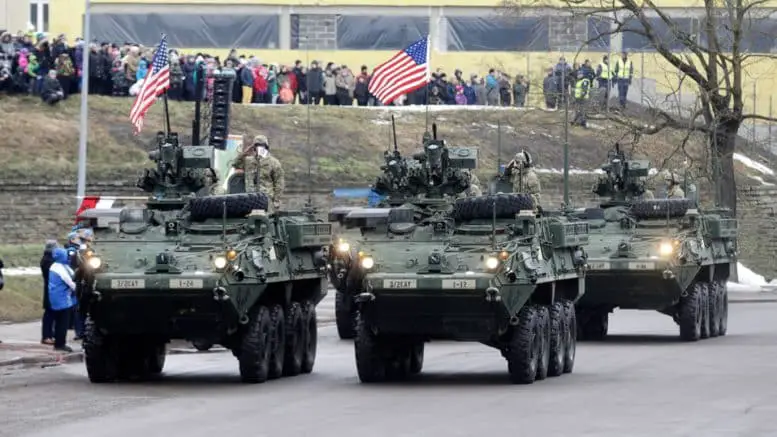Recent years have seen a hardening of relations between the United States/NATO and Russia. Russian actions in Ukraine—especially the annexation of Crimea on March 18, 2014—immediately led to a fear that similar tactics might be employed in other former Soviet states in Europe. The greatest outcry has come from the Baltic States: Estonia, Latvia, and Lithuania. With Russia transporting nuclear-capable missiles to Kaliningrad at the beginning of October and NATO progressively increasing its troop presence in the region and planning for further deployments (officially as a form of deterrence), the crisis does not appear to be slowing down.

In expressing the Russian perspective to English-speaking audiences, there is perhaps no better commentator than Stephen F. Cohen. A professor emeritus of Russian studies at both Princeton University and New York University, Cohen has long worked for a greater understanding of Russian politics in the West, and has long urged greater moderation in US/Russian relations. His analysis largely rebukes the US for engaging in a “triumphalism” with regard to Russia after the collapse of the Soviet Union and he argues that the official Russian position understands the past 25 years as a one-sided Cold War: with the Russians putting down their arms after the collapse of the Soviet Union, and the West, through the guise of NATO, behaving as if the war never ended.
This interpretation of events can be understood historically through two major points. First, the Warsaw Pact, formed by the USSR in 1955 as a response to NATO’s formation, dissolved in 1991. The continued existence of NATO was interpreted by Russia as evidence that the West still maintains an antagonistic position vis-à-vis Russia. Second, negotiations surrounding the unification of Germany and its subsequent absorption into NATO in 1990 were predicated on the alleged assurance of Secretary of State, James Baker that NATO would not strive to expand into Eastern Europe. Although this caveat was never formalized (some western commentators also claim that the agreement never took place), the Russian government has come to view NATO expansion eastward—Poland, the Czech Republic, and Hungary joined in 1999, Romania, Slovenia, and the Baltic States in 2004, Croatia and Albania in 2009—through the lens of a “backstabbing” narrative and a western desire to encircle Russia. The potential extension of NATO membership to Ukraine (talks began in 2008), although shelved by President Viktor Yanukovich in 2010, became a real possibility again with Yanukovich’s ouster four years later during the pro-western Euromaidan protests. In general, the Euromadain’s desire for greater integration with the European Union functioned as the “last straw” of western encirclement from the Russian perspective. Perhaps more importantly, it also threatened an important Russian military outpost at Sevastapol in Crimea.
For their part, the Baltic States can also express legitimate concerns with respect to Russia; all three nations have a long history of being dominated by Russia. The territories of the modern Baltic States were incorporated into the Russian empire through conquest: Estonia in 1721, Latvia in pieces—Livonia in 1721 and Latgale in 1775, and most of the traditional territories of Lithuania between 1772 and 1795. Moreover, beginning in the 1860s the peoples of these regions were also subject to programs of “Russification,” which, to varying degrees, saw the dissolution of national cultural institutions and the mandating of Russian language use in schools and government. The end of the First World War saw a short-lived independence for the Baltic States, but in 1940, the Soviet Union invaded and reincorporated all three states anew. Despite the fact that the Soviet Union took a much more enlightened view than did the Tsarist empire towards national difference, all three states jumped at the opportunity to reclaim their sovereignty between 1990 and 1991, as the USSR crumbled. As such, considering both their history with Russia, and their precarious position geographically, it should surprise no one that the Baltic States eagerly sought NATO protection. Similarly, the Baltic States request for an enhanced NATO presence within their borders following the events in Ukraine is also consistent with their shared historical trauma.
Of course, at this juncture it is difficult to predict if the current crisis along the Baltic borders could escalate into a larger conflict. But it would behoove the West to consider whether greater sensitivity regarding Russian views of NATO expansion may have prevented the current crisis or if it may have even avoided the tragedy in Ukraine, where the pro-Western forces pushing for NATO membership were operating from the same memory of historical trauma as the Baltic states. Although it is perfectly understandable why the Baltic States sought NATO membership, it’s an open question whether or not the West’s satisfaction of this request was strategically shortsighted—the product of which may be more harm than good. In any event, a peaceful solution will undoubtedly require compromise; and an inability to understand the concerns of the other side will surely make compromise impossible. This statement holds for all the parties involved.


